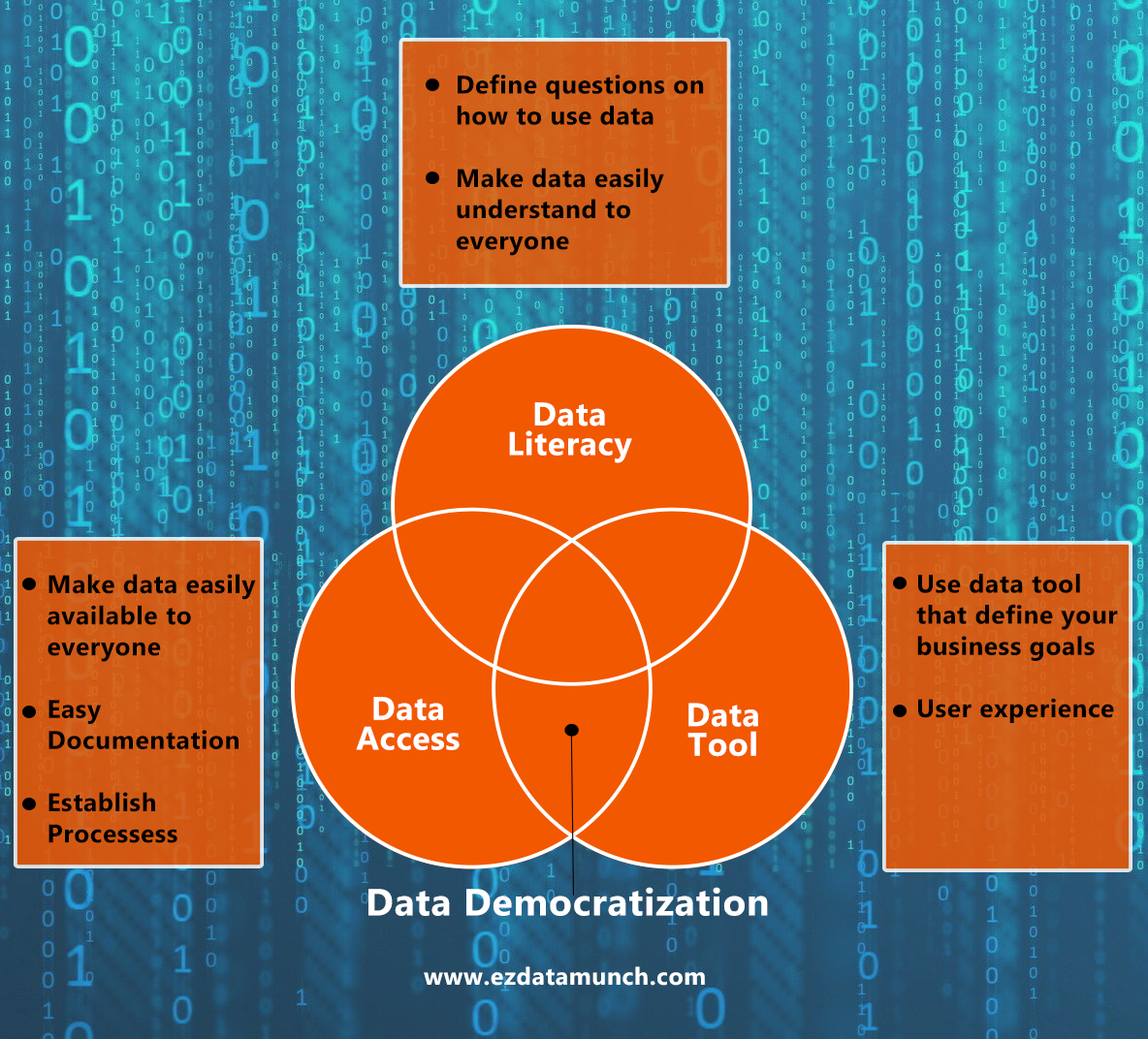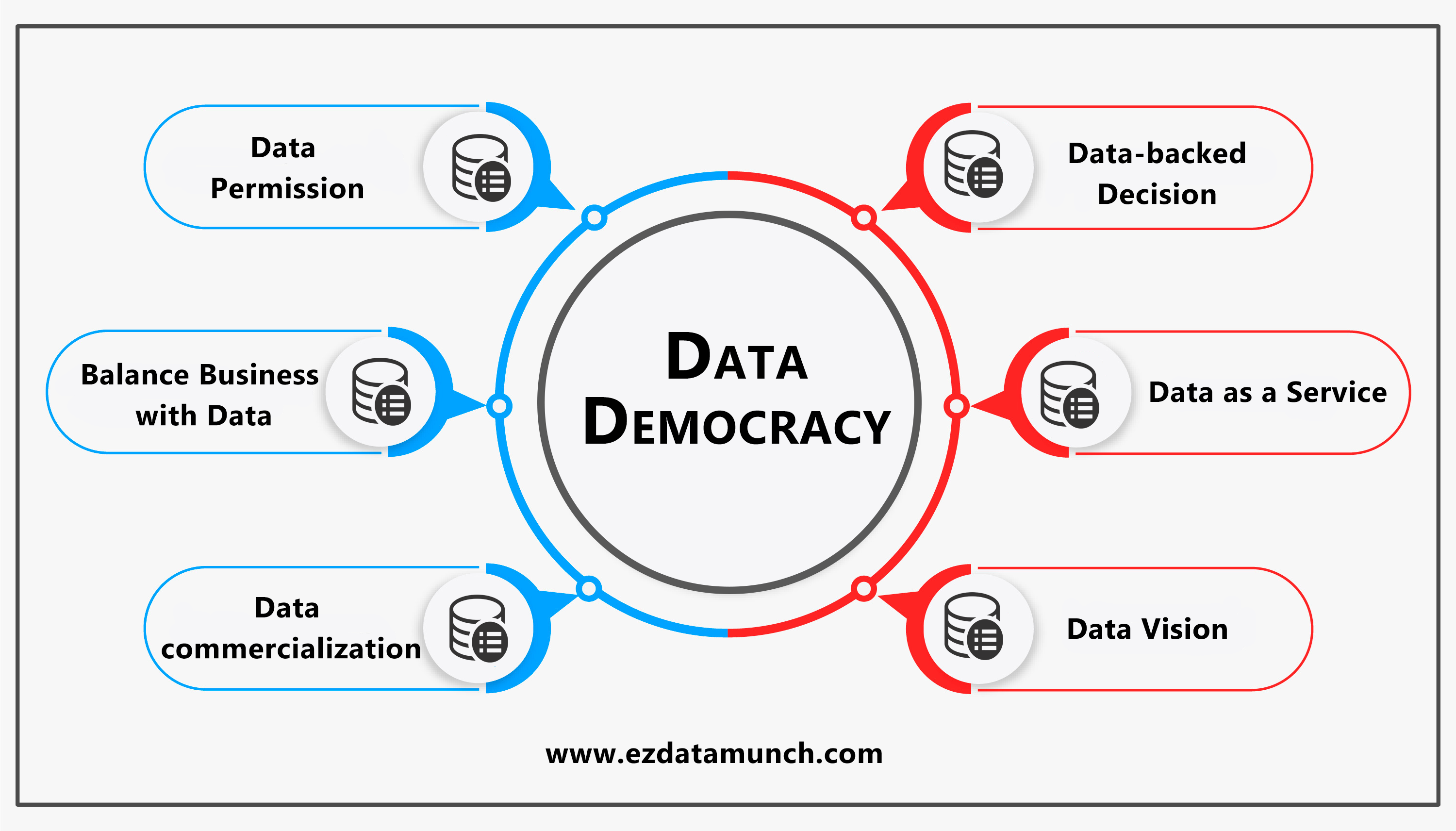Data Democratization and How to Get Started?
Data democratization can be defined as the process where one can use the data at any time to make decisions.
Join the DZone community and get the full member experience.
Join For Free
Today data is an important factor for business success. In every business, it has been observed that data is playing a game-changing moment to improve business performance.
Data is important and necessary in this increasingly competitive world. It is essential for companies to help maintain a competitive edge so that they can help reduce costs and grow profitable sectors that they have disappeared from.
Data comes in large volumes everywhere and in complex structures. It became complicated to understand. Being able to understand data is the preserve of longtime, highly paid data scientists and analysts. The idea of helping everyone to access and understand data is known as data democratization.
In this blog, we have introduced the features of data democratization that a business can adopt to overcome these challenges and establish an enterprise-wide data democracy.
What Is Data Democratization?
Data democratization can be defined as the process where one can use the data at any time to make decisions. In the organization, everyone benefits from having quick access to data and the ability to make decisions at their fingertips.
Data democratization has the potential to fit into any structure that depends on how your business operates and the purpose you serve. The whole scenario is one that involves exposure to the data and uses the required necessary metrics.

Benefits of Data Democratization
Easily Understand Data in the Environment
In every growing organization, there are many challenges to the increasing volume, diversity, and management of data categories. Information systems contain silence and are only accessible by relevant teams, providing users with a closer vision of the data space. An intensive data ecosystem provides a holistic view of information including metadata and context that seems more important and relevant.
Data for Everyone
Data democratization benefits the business to invest in data integration and analytics tools that offer the same usability and performance to everyone from developers to end-user with limited technical knowledge.
Find Your Legacy Data
Data democratization is always giving you the latest data for analysis and reporting. It also involves delivering data that is stuck within the legacy system to answer the question.
Allow User With Self-Service Analytics
Other benefits of data democratization are that it not only allows the user to access data but also performs data analysis and reporting for daily operations. However, we see a great shift in data integration and BI tools and technologies over the past few years to find data management platforms that facilitate access, analysis, and reporting of data in highly consumable ways, a constant for most enterprises.
Train Employee to Use Data
Data governance democratically goes hand in hand with data democratization, and the lack of a data governance plan can lead to information overload, poor judgment, and reputational risk. To avoid these demerits of data democratization, everyone in the organization should be trained on how to best use data, the importance of understanding data lineage, and how it can be adapted for BI and analytics.

What Are the Challenges Faced by Data Democratization During Implementation?
So far, we have seen what data democratization is and the advantages of using data democratization. Now, let's have a look at the challenges faced in data democratization during implementation. The main challenges faced by data teams to maintain a growing appetite for data from all areas of the organization, mainly when an understanding of data demands more complex analysis.
Many companies face the challenge that they want to provide every employee a chance to be data-driven, but they have fewer resources to distribute. Self-service analytics has solved this problem and enables everyone in the organization to work individually with resources and become a data scientist.
This happens by providing employees with a real-time data dashboard. In this case, this does not mean that providing technology to employees is sufficient, but rather that the team head needs to provide appropriate training to employees so that it can happen successfully. Self-service analytics make data democratization highly efficient.
Four Props of Data Democratization
Data democratization allows end-users to use data in digital form without involving IT staff. Below are 4 props of data democratization on which this system works.

Data
Data is considered as powerful assets for the organization. They help to take the necessary steps for building organizations. It can be stored on the server, in employee hard drive, it could be stored at (and shared by) partner companies.
Tools and Training
Data democratization can be powerful for users, but only when the data is used correctly. Typically, the IT team needs to train the user to work smoothly, especially as training takes place by creating or joining a mailing list or chat room; They can also ensure that beginners and experts physically sit next to each other.
People
To understand data analytics, it requires passion and dedication to engage with open, persistent, positive, and curious people. Employees need to be motivated and engaged to think, play with data, and ask questions. Engage them with regular seminars on key concepts, tools, and new technologies.
Strong Data Governance for Successful Data Democratization
Elect and Permit Data
It is quite logical to assume who is the best suit for data governance roles in an organization whether it can be a technical lead, a member of an IT team, etc. For careful consideration to ensure that your data is operated efficiently and strategically. For all growing segments, it is important for initiative leaders to be "data native" or have existing understanding and expertise in these areas.
Provide User Training
The end-user can be overwhelming for data analytics and visualization tools. This can be done by a two-factor one: the organization is not getting a lot of output from the equipment and the other is lack of proper training.
Before involving the user in using the system, ensure that the scope, importance, and processes of the data are clearly understood by the user. The training should cover the capabilities of the platform, how it should navigate, and a step-by-step approach to entering, accessing and interpreting data.
Create the Appropriate User Guide
Writing a user guide helps the user know the process of using systems, policies, and organization tools. Creating a clear framework goes hand-in-hand with user training, providing all end-users the resources and support they need to feel confident in the data, as well as their ability to navigate it accurately and efficiently.
Conclusion
Data democratization envisaged the future of managing big data and value. Today many businesses are equipped with the right tools and imparting knowledge to all their employees through the smart decision making and data democratization needed to provide better customer experience and overall health of the organization.
Opinions expressed by DZone contributors are their own.

Comments